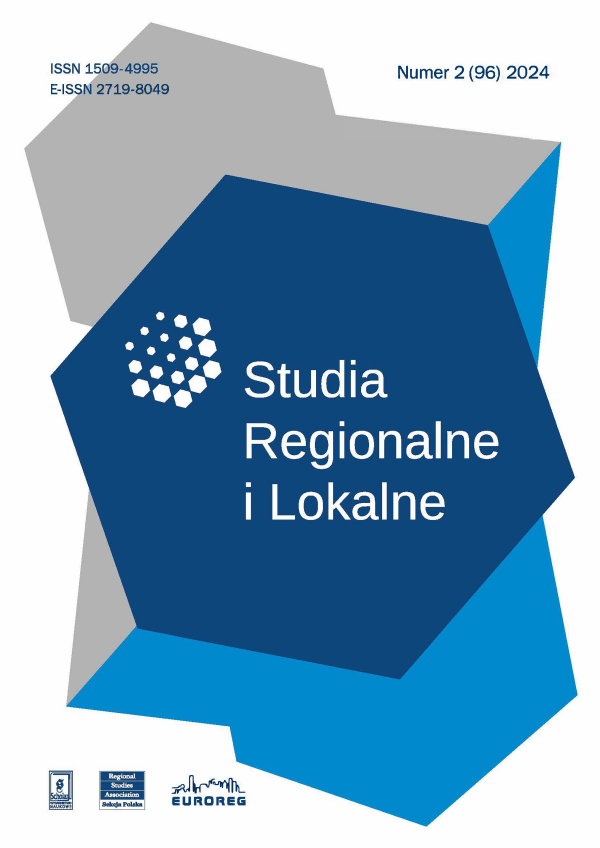Hierarchia interesów jako kryterium podejmowania decyzji w sytuacji NIMBY
Podejmowanie decyzji w sytuacji konfliktowej w praktyce polityki publicznej najczęściej kojarzy się z konfliktem interesów. Jedną z częstych form tego konfliktu jest tzw. zjawisko NIMBY, które stało się przedmiotem zainteresowania głównie ze względu na charakterystyczne cechy przestrzenne konfliktów. Bardzo bogatą bazę badań empirycznych dostarczyły polskie nauki geograficzne, co w niniejszym artykule pozwoliło na podjęcie próby analizy konfliktów typu NIMBY również pod kątem różnych interesów zbiorowych. Hipotetycznie, na tej podstawie możliwe byłoby znalezienie nowego podejścia do rozwiązywania tychże konfliktów nie tylko na etapie uczestnictwa interesariuszy, lecz także za sprawą kryteriów merytorycznych. Przy podejmowaniu tych decyzji należy przede wszystkim sprawdzić, czy w grę wchodzą uzasadnione interesy ponadindywidualne (grupowe), gdyż niekiedy uzasadnienie to jest wątpliwe i w rzeczywistości może być tylko interesem jednostki. Różne rodzaje interesów indywidualnych są w sposób uzasadniony kolektywizowane według różnych kryteriów. Jeśli chodzi o interesy uzasadnione, może dojść do konfliktu między pionowo zróżnicowanymi podmiotami tychże. Jednak, nawet w tym przypadku, wyższa pozycja hierarchiczna jednego z podmiotów nie może sama w sobie oznaczać pierwszeństwa dla jego interesu. Podobnie jak w przypadku konfliktu usytuowanego horyzontalnie, decydująca jest treść: interesy o większym stopniu substancjonalności powinny być uprzywilejowane: te z poziomu wartości indywidualnych, takich jak ludzkie życie, zdrowie itp., muszą pozostawać nadrzędne wobec interesów o charakterze ekonomicznym itp., te zaś – wobec zwykłych interesów krótkotrwałych. Jak się okazuje, to właśnie stopień uzasadnionych kolektywizowanych interesów ponadindywidualnych, a nie zwykłe preferowanie tychże tylko na podstawie pozycji ich podmiotów w hierarchii pionowej, jest podstawowym kryterium oceny preferencji w podejmowaniu decyzji w konfliktach interesów publicznych.
The Hierarchy of Interests as a Decision-Making Criterion in the NIMBY Situation
Decision-making in a conflict situation in public policy practice is most often associated with conflicts of interest. One of the frequent forms of this conflict is the so-called NIMBY phenomenon, which has become a subject of interest mainly because of the distinctive spatial characteristics of the conflicts. A very rich base of empirical research has been provided by the Polish geographical sciences, which allowed us to attempt in this study to propose an analysis of NIMBY-type conflicts in terms of different types of collectivised interests. Hypothetically, on this basis, it would be possible to find a new approach to the resolution of these conflicts no longer only in the processes of participation of stakeholders but based on merit-based criteria. When making these decisions, it is necessary, first, to check whether there are legitimate supra-individual (group) interests at stake, since sometimes this legitimacy is questionable, and it may be only an individual interest. Different types of individual interests are justified and collectivised according to different criteria. When it comes to legitimate interests, there may be a conflict between the vertically differentiated bearers of these interests. However, even in this case, the higher hierarchical position of one of the bearers cannot imply a preference for his/her legitimate interest. As in the case of a horizontally-situated conflict, the decisive factor is the content, where interests with a higher degree of substance should be privileged over others: interests that are already concerned at the individual level with values such as human life, health, etc., must be privileged over others. They must be privileged over the interests of an economic nature, etc., and these over ordinary short-term interests. It turns out to be obvious that it is the degree of legitimate collectivised supraindividual interests that is the primary criterion for assessing preferences in decision-making in conflicts of public interests, rather than the simple preference of legitimate supra-individual interests only according to the position of their bearers in the vertical hierarchy.



